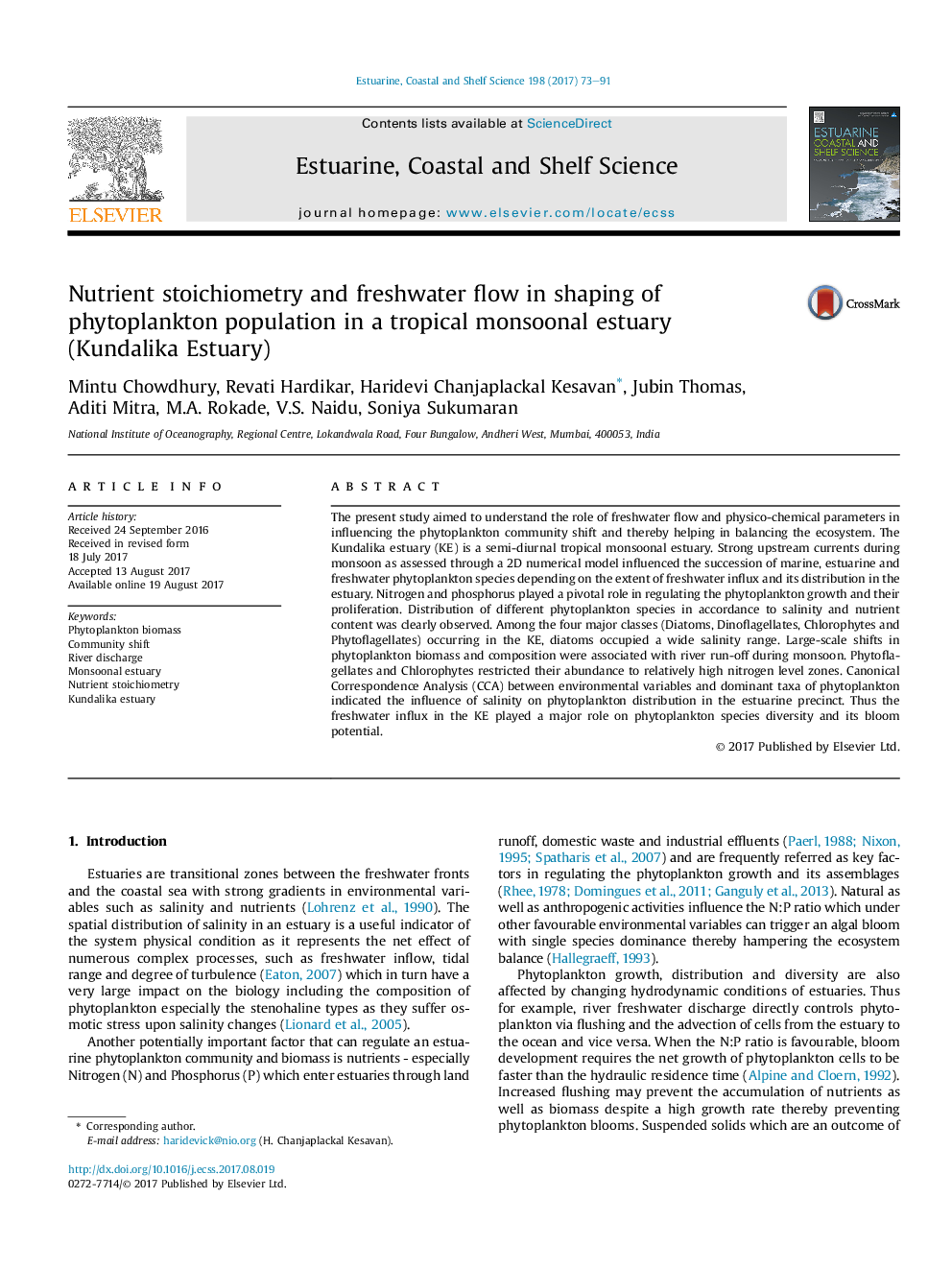| Article ID | Journal | Published Year | Pages | File Type |
|---|---|---|---|---|
| 5765297 | Estuarine, Coastal and Shelf Science | 2017 | 19 Pages |
The present study aimed to understand the role of freshwater flow and physico-chemical parameters in influencing the phytoplankton community shift and thereby helping in balancing the ecosystem. The Kundalika estuary (KE) is a semi-diurnal tropical monsoonal estuary. Strong upstream currents during monsoon as assessed through a 2D numerical model influenced the succession of marine, estuarine and freshwater phytoplankton species depending on the extent of freshwater influx and its distribution in the estuary. Nitrogen and phosphorus played a pivotal role in regulating the phytoplankton growth and their proliferation. Distribution of different phytoplankton species in accordance to salinity and nutrient content was clearly observed. Among the four major classes (Diatoms, Dinoflagellates, Chlorophytes and Phytoflagellates) occurring in the KE, diatoms occupied a wide salinity range. Large-scale shifts in phytoplankton biomass and composition were associated with river run-off during monsoon. Phytoflagellates and Chlorophytes restricted their abundance to relatively high nitrogen level zones. Canonical Correspondence Analysis (CCA) between environmental variables and dominant taxa of phytoplankton indicated the influence of salinity on phytoplankton distribution in the estuarine precinct. Thus the freshwater influx in the KE played a major role on phytoplankton species diversity and its bloom potential.
